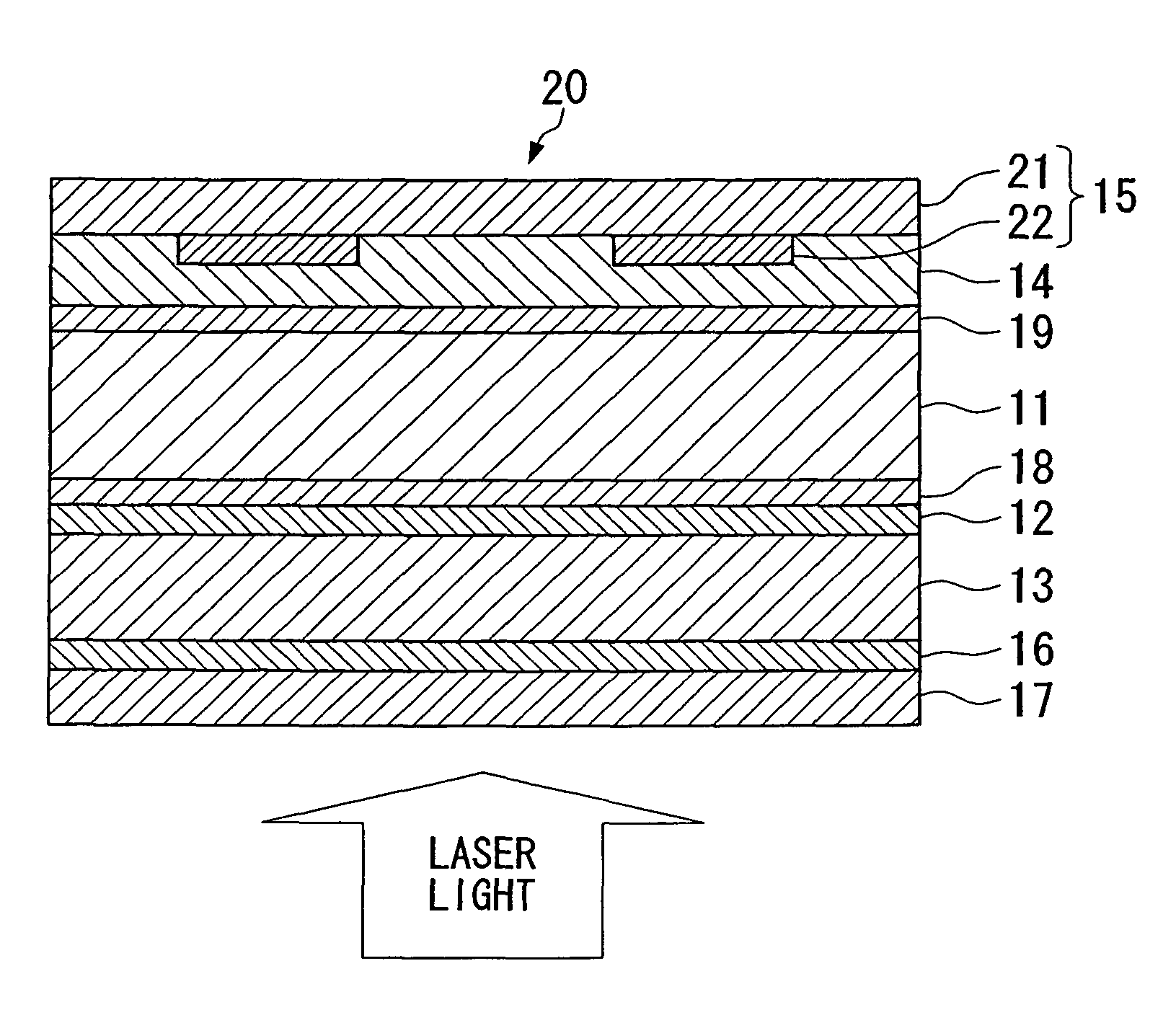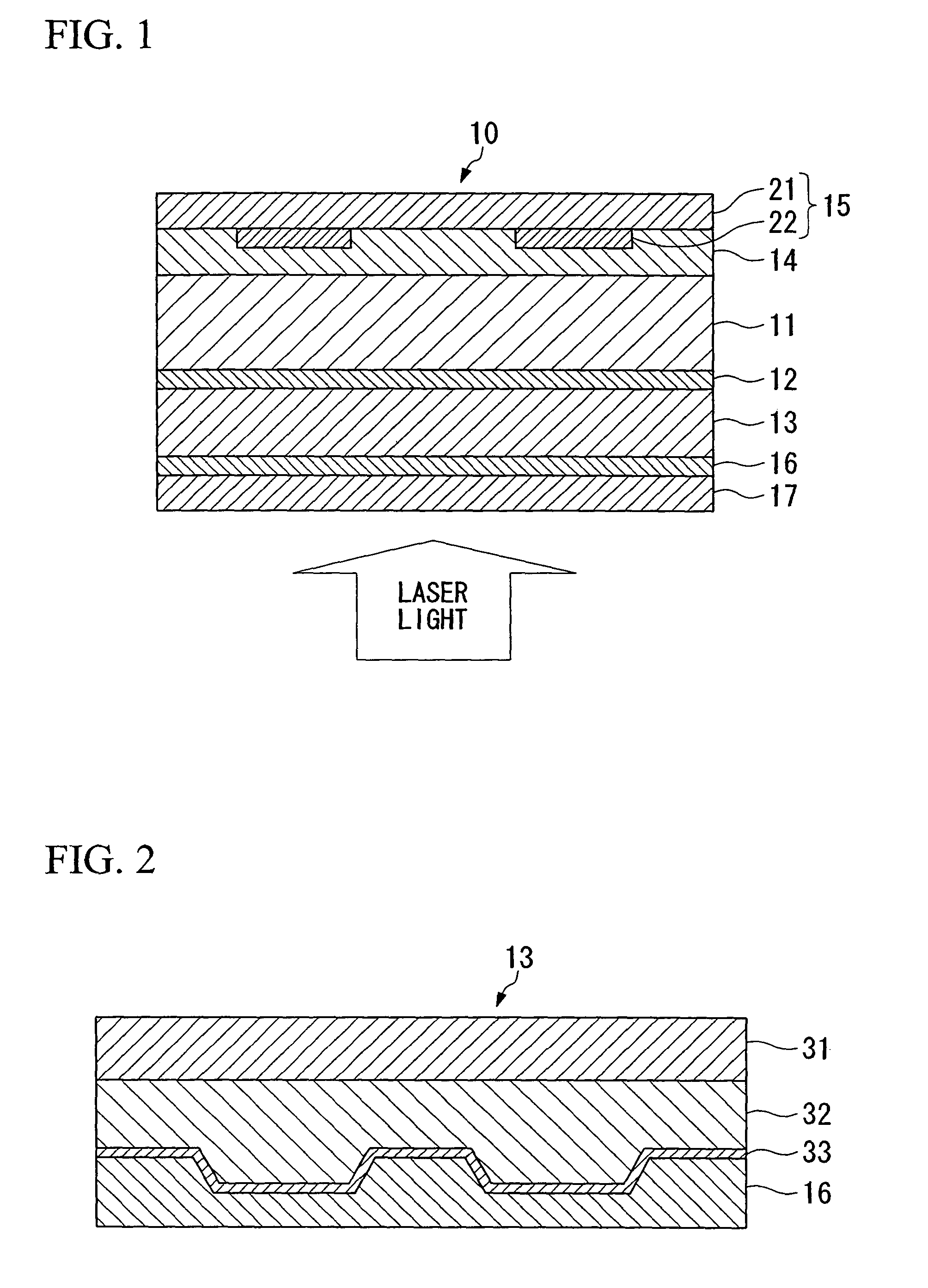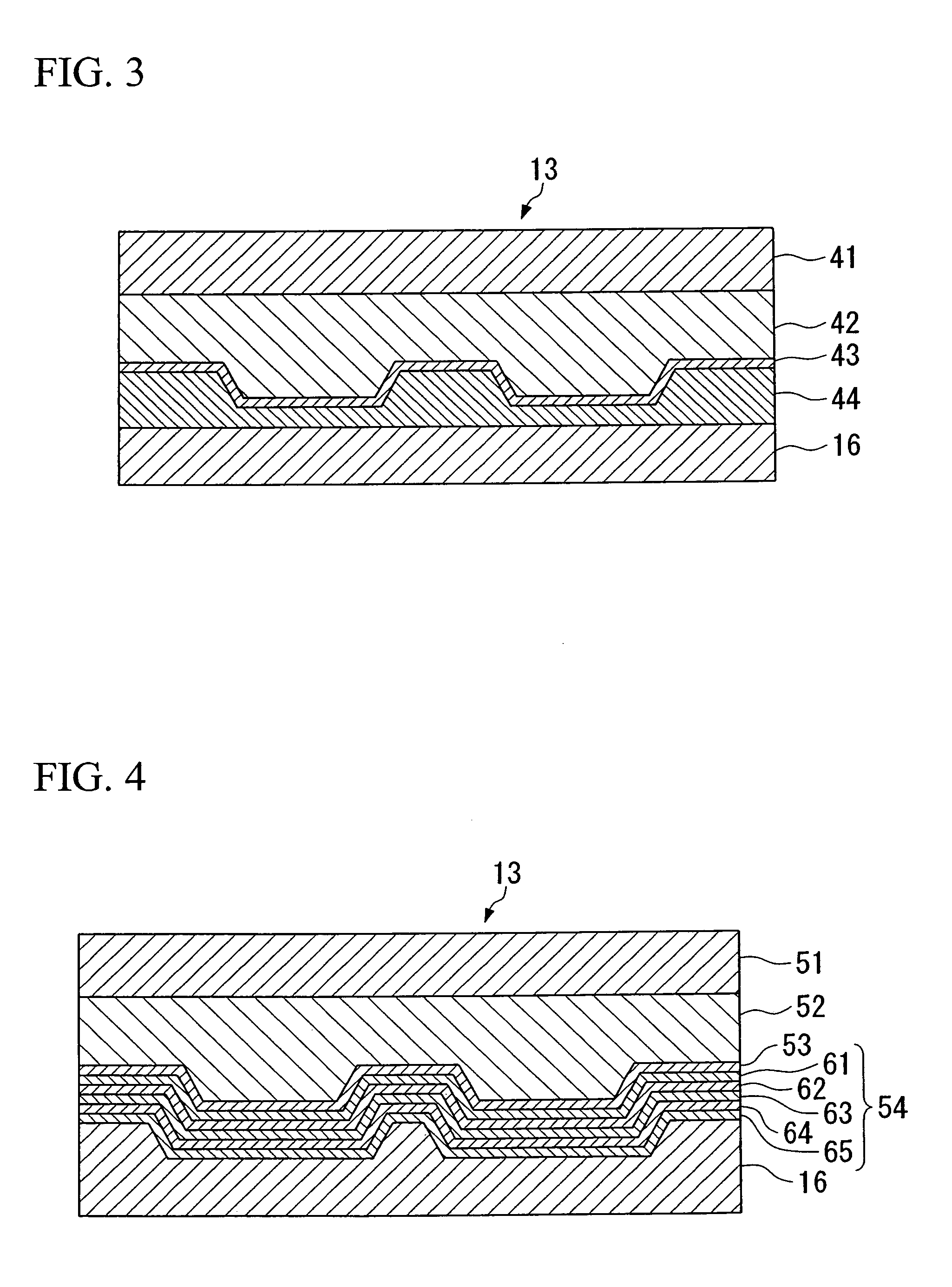Optical disc and method of manufacturing same
a technology of optical discs and optical discs, applied in the field of optical discs, can solve the problems of inability to separate the various materials, sharp fragments which must be handled with care, and failure to destroy the discs, etc., and achieve the effect of easy destruction, easy separation, and the same level of performan
- Summary
- Abstract
- Description
- Claims
- Application Information
AI Technical Summary
Benefits of technology
Problems solved by technology
Method used
Image
Examples
example 1 (
Preparation of Printed Sheet)
[0173]A stretched polylactic acid film of a thickness of 0.04 mm (Ecoloju®, manufactured by Mitsubishi Plastics, Inc.) was subjected to gravure printing using a biodegradable polyester-based printing ink (Biotech Color® HGP, manufactured by Dainichiseika Color & Chemicals Mfg. Co., Ltd.), thereby yielding a printed sheet on which was printed a display showing the type of optical disc, additional information relating to the optical disc, and a decorative image and the like.
Preparation of Substrate
[0174]Adhesive layers formed from an adhesive were provided on both surfaces of a sheet of paper of a thickness of 0.6 mm, and polycarbonate films (sheets of Panlite®, manufactured by Teijin Ltd.) of a thickness of 0.18 mm were then bonded to both surfaces of the paper, thereby yielding a substrate with a thickness of 1.1 mm. Polyethylene was then coated onto both surfaces of the substrate by melt extrusion coating, thereby pre-forming release layers of a thickne...
example 2
[0185]With the exception of altering the preparation of the recording layer sheet in the manner described below, optical discs were prepared in the same manner as the Example 1.
Preparation of Recording Layer Sheet
[0186]Surface projections / depressions that correspond with tracks were transferred to a copper-plated roll, and the roll was then subjected to chrome plating to form a transfer mold.
[0187]A stretched high density polyethylene film with a thickness of 0.05 mm was subjected to die coating with an ultraviolet curable resin in sufficient quantity to form a film thickness of 0.1 mm, and the transfer mold was then pressed against the film surface, thereby transferring the surface projections / depressions of the mold to the surface of the ultraviolet curable resin.
[0188]Subsequently, the ultraviolet curable resin was irradiated with ultraviolet light, thereby curing the ultraviolet curable resin and forming the tracks.
[0189]Aluminum was then deposited on the tracks by vacuum deposi...
example 3
[0193]With the exception of altering the preparation of the recording layer sheet in the manner described below, optical discs were prepared in the same manner as Example 1.
Preparation of Recording Layer Sheet
[0194]Surface projections / depressions that correspond with tracks were transferred to a copper-plated roll, and the roll was then subjected to chrome plating to form a transfer mold.
[0195]A stretched high density polyethylene film with a thickness of 0.05 mm was subjected to die coating with an ultraviolet curable resin in sufficient quantity to form a film thickness of 0.1 mm, and the transfer mold was then pressed against the film surface, thereby transferring the surface projections / depressions of the mold to the surface of the ultraviolet curable resin.
[0196]Subsequently, the ultraviolet curable resin was irradiated with ultraviolet light, thereby curing the ultraviolet curable resin and forming the tracks.
[0197]Aluminum was then deposited on the tracks by vacuum deposition...
PUM
| Property | Measurement | Unit |
|---|---|---|
| height Rmax | aaaaa | aaaaa |
| height Rmax | aaaaa | aaaaa |
| surface smoothness | aaaaa | aaaaa |
Abstract
Description
Claims
Application Information
 Login to View More
Login to View More - R&D
- Intellectual Property
- Life Sciences
- Materials
- Tech Scout
- Unparalleled Data Quality
- Higher Quality Content
- 60% Fewer Hallucinations
Browse by: Latest US Patents, China's latest patents, Technical Efficacy Thesaurus, Application Domain, Technology Topic, Popular Technical Reports.
© 2025 PatSnap. All rights reserved.Legal|Privacy policy|Modern Slavery Act Transparency Statement|Sitemap|About US| Contact US: help@patsnap.com



